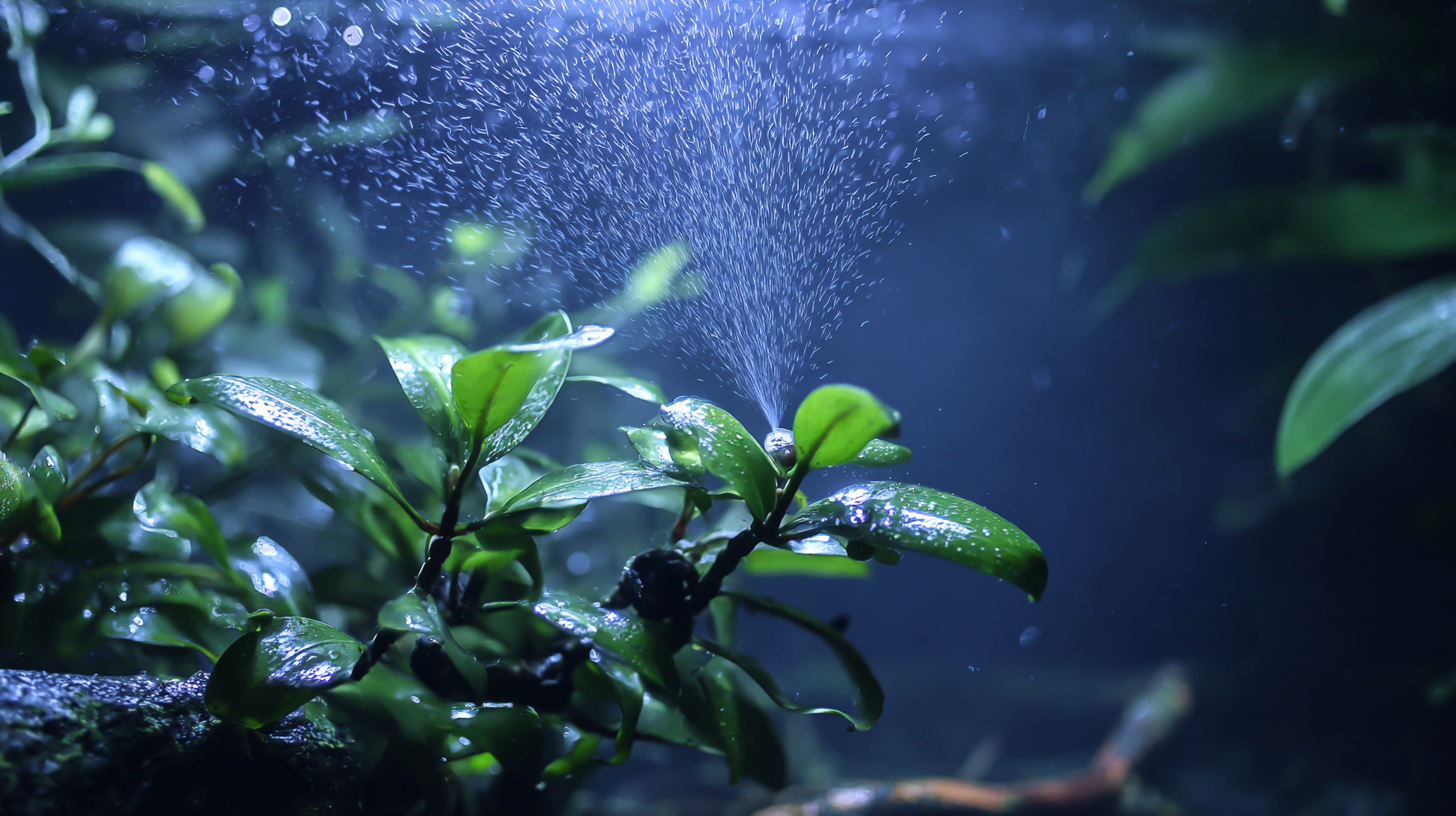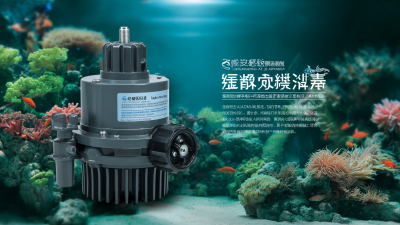Maximize Your Aquatic Bliss with the Best Aquarium Air Pump Performance Insights
In the vibrant world of aquarium maintenance, ensuring optimal water quality and oxygen levels is paramount for the health of your aquatic inhabitants. Among the essential components contributing to this environment, the Aquarium Air Pump stands out as a critical investment for both novice aquarists and seasoned hobbyists alike. This essential device not only enhances the overall aesthetic of your aquarium but also plays a vital role in promoting gas exchange, preventing stagnation, and creating a soothing atmosphere for fish and aquatic plants. However, with a plethora of options available on the market, it can be overwhelming to determine which model will deliver the best performance. In this guide, we will explore the key features and benefits of various Aquarium Air Pumps, providing insights on how to maximize your aquatic bliss and ensure your underwater ecosystem thrives. Whether you are setting up a new tank or upgrading your existing setup, understanding the nuances of Aquarium Air Pump technology is crucial for fostering a flourishing aquatic habitat.

Understanding Aquarium Air Pumps: Key Features and Benefits
Aquarium air pumps are essential devices that play a crucial role in maintaining a healthy aquatic environment. Understanding the key features of these pumps can help you select the best option for your aquarium setup. One of the most important features is the pump's airflow rate, typically measured in liters per hour. A higher airflow rate ensures that your aquarium has adequate oxygenation, which is vital for fish and plant health. Furthermore, noise level is another critical factor; quieter pumps create a more serene environment, allowing you to enjoy your aquatic scenery without disruption.

In addition to airflow and noise, energy efficiency is a significant benefit of modern aquarium air pumps. Many contemporary models are designed to consume less electricity while delivering optimal performance, making them cost-effective choices for aquarium enthusiasts. Durability is also important; robust materials can extend the pump's lifespan, ensuring you get the most out of your investment. Lastly, ease of maintenance should not be overlooked, as accessible filters and components make it simpler to keep your air pump functioning effectively, further enhancing your underwater paradise.
Selecting the Right Size and Type of Air Pump for Your Aquarium
When selecting an air pump for your aquarium, one of the most crucial factors to consider is the size of your tank. The air pump should be capable of delivering adequate aeration without overpowering the aquatic environment.
For smaller tanks, a quieter, lower-capacity pump is often sufficient, while larger tanks may require a more powerful pump to ensure proper oxygen distribution. Always refer to the manufacturer's specifications to determine the appropriate pump strength for your aquarium's size.
In addition to size, the type of air pump plays a significant role in performance. There are various types of pumps available, including diaphragm, linear, and submersible pumps, each with unique functionalities and efficiency levels. Diaphragm pumps are popular for their quiet operation and reliability, while linear pumps provide more robust output suitable for larger setups. Submersible pumps offer convenience as they can be placed directly in the water, reducing noise and saving space. By carefully considering both the size and type of air pump, aquarists can enhance the health and vitality of their aquatic inhabitants.
Tips for Optimizing Air Pump Performance and Efficiency
Optimizing the performance and efficiency of your aquarium air pump is crucial for creating a healthy aquatic environment. A well-functioning air pump not only enhances oxygen transfer but also ensures even water circulation, which is vital for the overall wellbeing of your fish and plants. To maximize your aquatic bliss, consider the following tips to elevate your air pump's performance.
First, regular maintenance is essential. Cleaning the air pump and its components can prevent clogs and ensure optimal airflow. Check the air stones for blockages and replace them if necessary. Additionally, inspecting the tubing for any kinks or leaks can greatly improve the pump's efficiency. Keeping the air pump in a low-noise environment can also enhance its performance while reducing operational noise, contributing to a peaceful atmosphere in your aquarium.
Second, right sizing your air pump is pivotal. An air pump that is either too small or too large for your aquarium can lead to inefficient operation. To determine the appropriate size, consider the volume of water in your tank and the specific oxygen needs of your aquatic life. This tailored approach not only optimizes performance but also saves energy, allowing for a more cost-effective operation. Implementing these tips will help you maintain an efficient air pump that supports a thriving aquatic ecosystem.
Maintenance Essentials: Keeping Your Aquarium Air Pump in Top Shape
Maintaining an aquarium air pump is crucial for ensuring optimal performance and longevity, which directly impacts the health of your aquatic environment. Regular maintenance tasks should include checking and cleaning the air filter. Over time, these filters can become clogged with debris and algae, significantly reducing air flow and efficiency. A simple rinse under warm water can help restore proper function, but it's important to replace the filter regularly, as recommended by the manufacturer.

In addition to filter maintenance, monitoring the air pump's overall performance is essential. Listen for unusual noises that may indicate wear and tear, and routinely check for any signs of leaks in the tubing. Ensuring that the pump is placed on a stable surface can minimize vibrations and prolong its lifespan. Keeping the area around the pump free from dust and debris also contributes to better airflow and efficiency. By incorporating these maintenance essentials into your routine, you can maximize the performance of your aquarium air pump and, consequently, the health of your aquatic habitat.
Troubleshooting Common Air Pump Issues for Aquatic Bliss
Troubleshooting common air pump issues is crucial for maintaining a healthy aquarium environment. A well-functioning air pump is key to ensuring adequate oxygenation in your tank, which is vital for fish and plant health. According to a study published by the Journal of Aquatic Biology, poor oxygen levels can lead to stress and increased mortality rates in aquatic life. For instance, dissolved oxygen concentrations below 5 mg/L can significantly impair fish respiration, making regular air pump maintenance essential for optimal performance.
One of the most common issues faced by aquarium enthusiasts is reduced airflow. Factors contributing to this problem can include clogged air stones or damaged airline tubing. The Aquarium Industry Association notes that replacing air stones every 6 to 12 months can enhance airflow and overall pump efficiency. Additionally, regular checks on airline tubing for kinks or blockages can prevent unexpected drops in oxygen levels. By keeping these components in good condition, aquarists can ensure their air pumps run effectively, thereby maximizing the aquatic bliss for their underwater inhabitants.
Related Posts
-

Trustworthy Quality from China Unleashing the Best Aquarium Air Pump for Global Customers
-

10 Best Aquarium Air Pumps for Optimal Fish Health in 2023
-

2025 Trends in Aquarium Air Pump Technology and Innovative Solutions for Pet Enthusiasts
-

5 Reasons Online Pet Retailers Are Revolutionizing Pet Ownership
-

Unlocking Opportunities in Pet Accessories at the 137th Canton Fair A Gateway for Global Buyers
-

What is the Ultimate Guide to the Best Fish Aquarium Products for Global Buyers
Copyright © 2021 Payless Pet Products - All Rights Reserved.